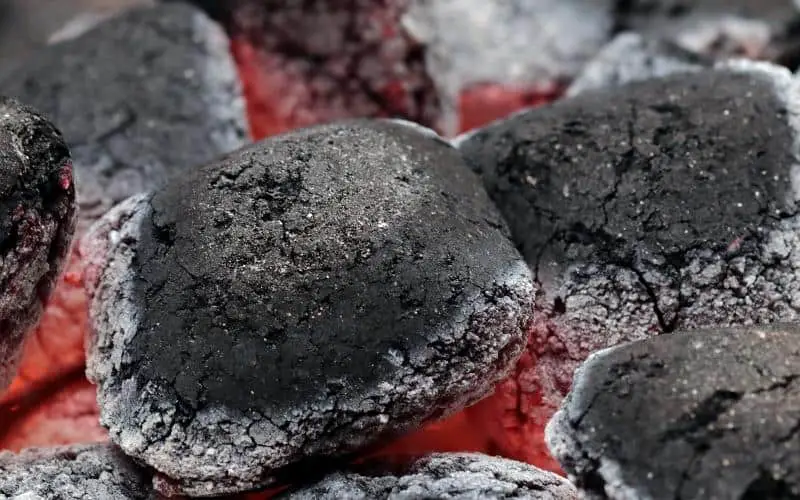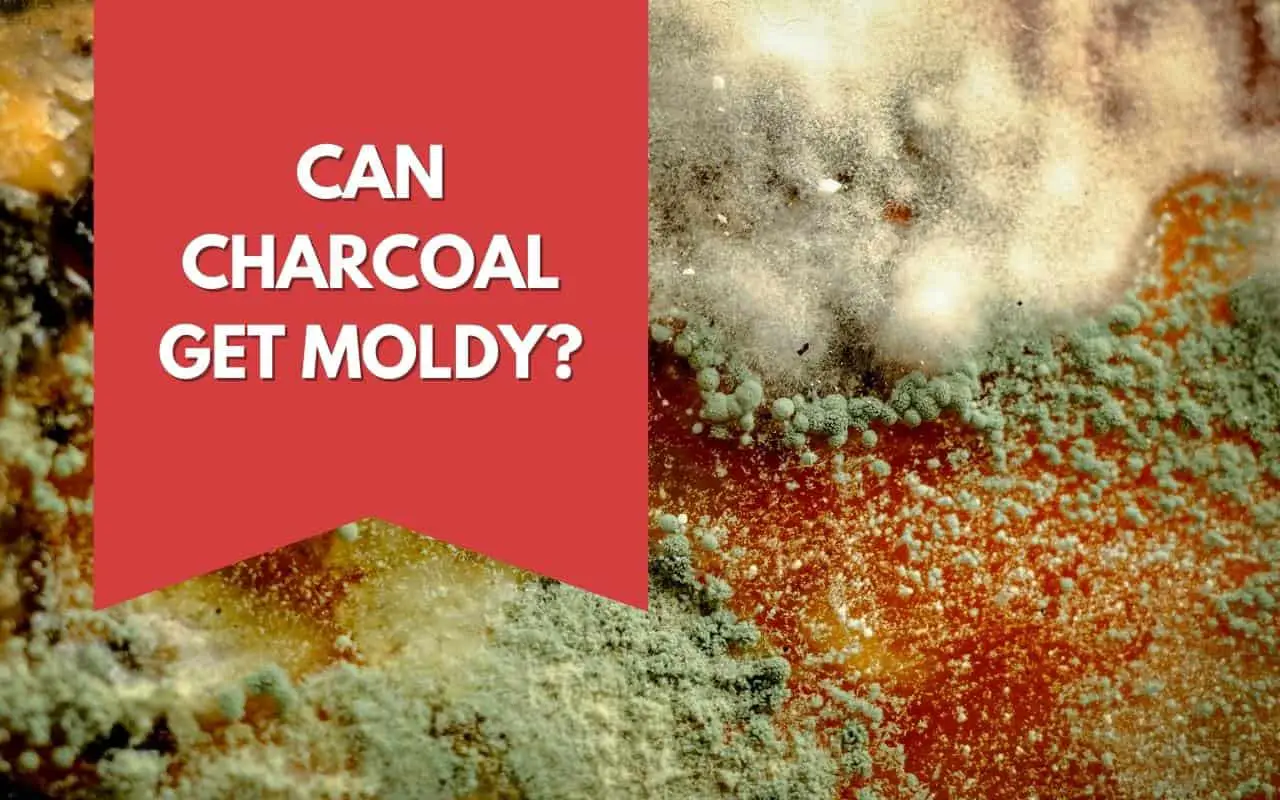It’s no secret that grilling season is one of the best times of the year. There’s nothing quite like firing up the grill, throwing on some burgers or steaks, and enjoying a delicious meal outdoors with family and friends.
Charcoal grills are still the preferred method for many grill masters, as they provide better flavor than gas grills or griddles.
But there’s one potential catch that doesn’t get discussed very often: the possibility that your charcoal might get moldy.
So can charcoal get moldy?
Yes, charcoal can get moldy. Briquettes, in particular, are more likely to grow mold than lump charcoal. The mold can range in color from white to black, and it usually appears as a powdery substance or may look like fuzzy tufts of strands.
Although mold forming on charcoal is not that common, it does happen from time to time and it may be an unpleasant surprise if you come across it. Especially if it’s present in a previously unopened bag.
Read on to learn more about why mold forms on charcoal and how to prevent it.
Why Does Charcoal Get Moldy?
Mold is a type of fungi that thrives in damp and humid environments. The spores that mold produces are carried through the air and can land on surfaces like charcoal.
If the conditions are right, the mold will start to grow and multiply, resulting in a visible mold colony.
Although charcoal is not exactly an ideal substrate for mold growth, it can happen if the charcoal is stored in a damp place or if it gets wet.
As I mentioned, you are more likely to encounter mold on briquettes which is probably because they are made from a mix of compressed materials. Some of which may be more susceptible to mold growth than others.

Lump or hardwood charcoal, on the other hand, is made from a single piece of wood that has been carbonized.
Is It Safe To Use Moldy Charcoal?
My personal rule is to toss away moldy charcoal. It’s not that expensive and I believe risking your health is not worth it. I would rather buy a new bag of charcoal or come up with an alternative cooking method than use moldy briquettes.
I know that some people don’t mind using moldy charcoal. The fact is that the charcoal gets so hot before you put any food on the grill grates that the mold has no chance of surviving.
While this may be the case, I still avoid using moldy charcoal. I would rather be safe than sorry. Besides, handling it may release some of the mold spores into the air, which you could then inhale.
Of course, not all mold is created equal. Some types are more dangerous than others. Some are even prolonging our lives as parts of antibiotics. But unless you’re a mold expert, it’s best to err on the side of caution.
Also, keep in mind that when mold is visible on the surface of one briquette, there’s a good chance that the spores are already present on all the other briquettes. So even if you can’t see any mold, it’s most likely there.
Anyway, it’s your call.
How To Prevent Mold From Forming On Your Charcoal?
Now that we’ve established that mold sometimes does, in fact, grow on charcoal, let’s take a look at how to prevent it.
The best way to prevent moldy charcoal is to store it in a cool dry, well-ventilated place. Cool and dry immediately tells you to avoid storing it outside. Store the charcoal in your garage instead to protect it from getting wet.
If you live in an area with high humidity, you may want to consider storing your charcoal in a container. Preferably an airtight container.
Kingsford Charcoal Storage Container
A large, weatherproof storage solution for up to 22 lb of charcoal briquettes or 40 lb of wood pellets. Featuring a rainproof lid and heavy-duty construction with EZ grip handles, this container ensures longevity and easy transport. Its slim, stackable design maximizes storage space, making it suitable for camping or tailgating.
There are a lot of special containers designed for storing charcoal. However, even something cheap and not designed for charcoal will work just fine.
Sometimes you may draw the short straw and end up with charcoal that has formed mold even before you bought it. In this case, I would recommend returning the charcoal to the store you bought it from. There’s no excuse for selling moldy stuff.
Does Wet Charcoal Always Get Moldy?
No. In fact, moldy charcoal is a somewhat rare occurrence.
I’ve been grilling half of my life using charcoal and managed to get it wet many times. And yet I’ve only come across moldy briquettes a handful of times.
So, if you accidentally get your charcoal wet, don’t panic, mold is not going to automatically start growing on it.
However, you should still take measures to dry the charcoal as soon as possible if you are planning on ever using it again.
The best way to do this is to leave it out in the sun for a few hours or days depending on how wet it is.
Final Thoughts
Mold on charcoal is not that common but it can happen. The best way to prevent it is to store the charcoal, especially the briquettes, properly in a dry place instead of letting it get wet out in your backyard.
If you do find mold on your briquettes, it’s best to discard them. Some people don’t care and will still use the charcoal. It’s your call. Just know that mold, in general, is not something you want to mess with.
Happy, mold-free, grilling!
FAQ
How can I tell if my charcoal is moldy?
You can only tell the charcoal is moldy when you see the mold. The spores can be present even if you don’t see any mold yet.
Can I still use charcoal if it has mold on it?
It’s up to you. The heat produced by the burning charcoal should theoretically kill pretty much anything present. I would recommend discarding it and buying new charcoal though.
How do I prevent my charcoal from getting moldy?
Don’t let it get damp. Store it in a garage or a similar dry place.


